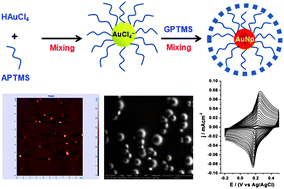3-Glycidoxypropyltrimethoxysilane mediated in situ synthesis of noble metal nanoparticles: Application to hydrogen peroxide sensing
Abstract
The in situ synthesis is reported of noble metal nanoparticlesvia3-glycidoxypropyltrimethoxysilane mediated reduction of


 Please wait while we load your content...
Please wait while we load your content...